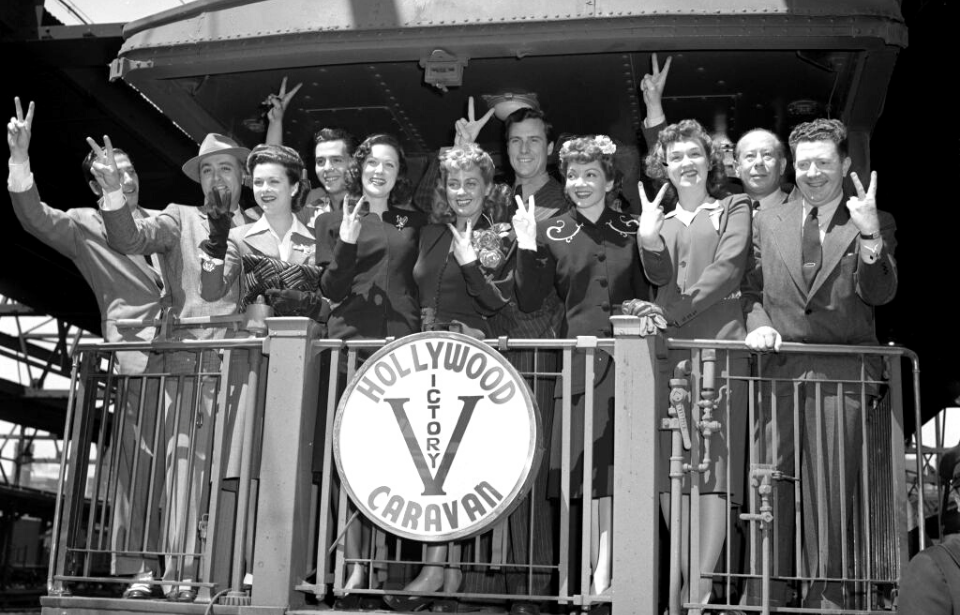For many, the start of World War II meant yet another conflict that would affect everyday life. The vast majority of Americans didn’t want to get involved, and many businesses feared losing money from European markets, Hollywood included. For the most part, movie studios didn’t want to alienate the new German administration – that is, until the Japanese attack on Pearl Harbor on December 7, 1941.
From then on, support for the war effort skyrocketed and everyone banded together to fight America’s enemies.
Creation of the Hollywood Victory Committee
Shortly after the attack on Pearl Harbor, President Franklin Roosevelt approached Hollywood‘s most influential figures and asked them to get involved in the war effort. He called upon them to push the sale of war bonds, explain new government policies and raise compliance with rationing programs.
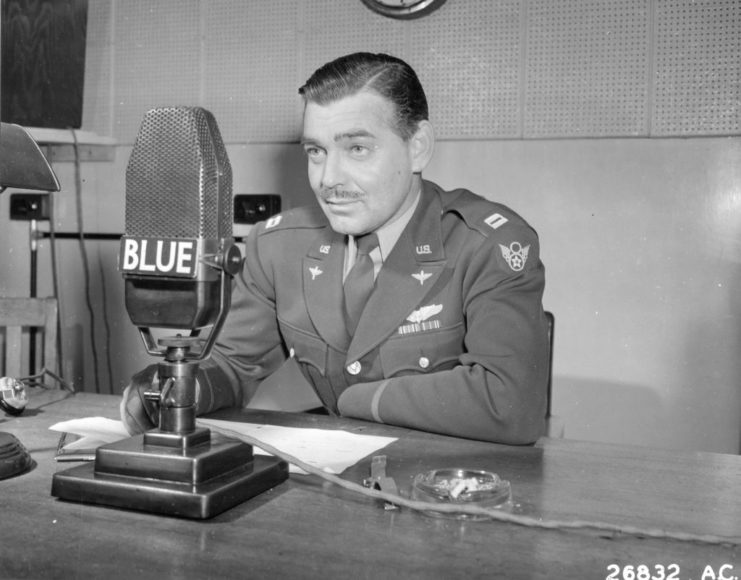
Roosevelt’s request prompted the Screen Actors Guild to create the Hollywood Victory Committee, a way for performers to promote the war effort and increase the morale of troops both in America and overseas.
The committee’s first chairmen was actor Clark Gable, who not only encouraged his fellow celebrities to get involved, but to actively join the military. He led by example and enlisted, along with the likes of Jimmy Stewart and Ronald Reagan. Other chairmen included George Murphy, James Cagney and Sam Levene.
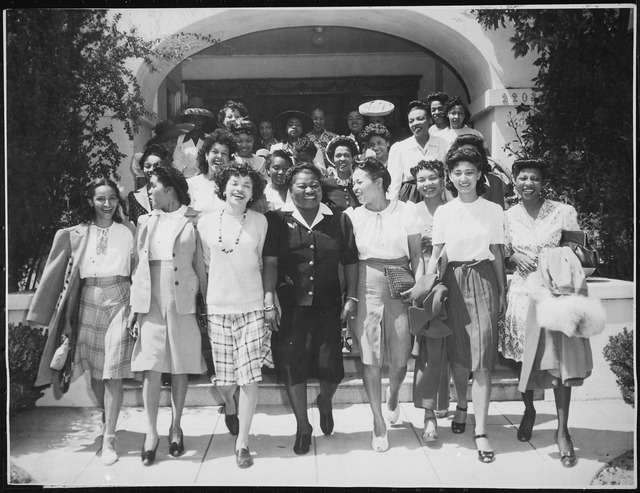
Academy Award-winning actress Hattie McDaniel was the chairman of the Negro Division, which provided entertainment for those troops in American hospitals and stationed at the country’s many military bases.
Thousands of events held over the course of its existence
Between January 1942 and August 1945, the Hollywood Victory Committee organized events both within the US and overseas. Many of its stars appeared in shows put on by the USO, with many travelling to the British Isles to entertain troops with musical and variety performances.
Radio broadcasts were an integral part of the committee’s initiatives, as they granted the ability to reach millions of people with ease. As such, many stars were recruited to record messages promoting the purchase of war bonds and raising funds for charity.
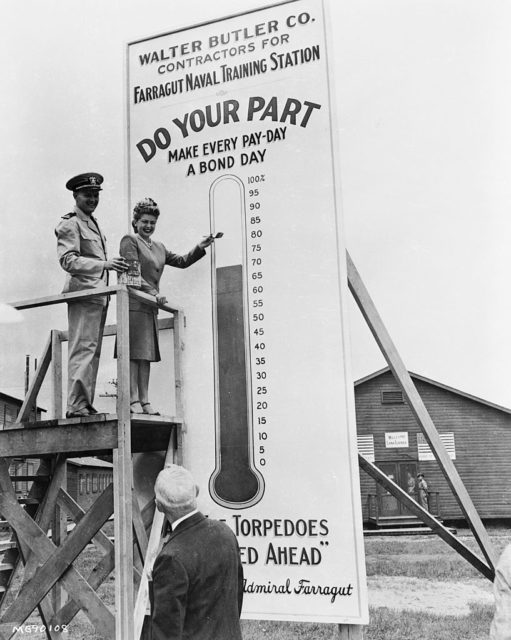
The committee also encouraged movie theaters to get involved in the war effort. Many became collection centers for items needing to be recycled – primarily scrap metal – with celebrities often leading these drives. Actress Rita Hayworth, for example, went as far as to donate the front and back bumpers of her car to prompt others to give what they could.
Theaters also became blood donation centers, with members of the committee making public donations. Some establishments even offered free admission to those who donated.
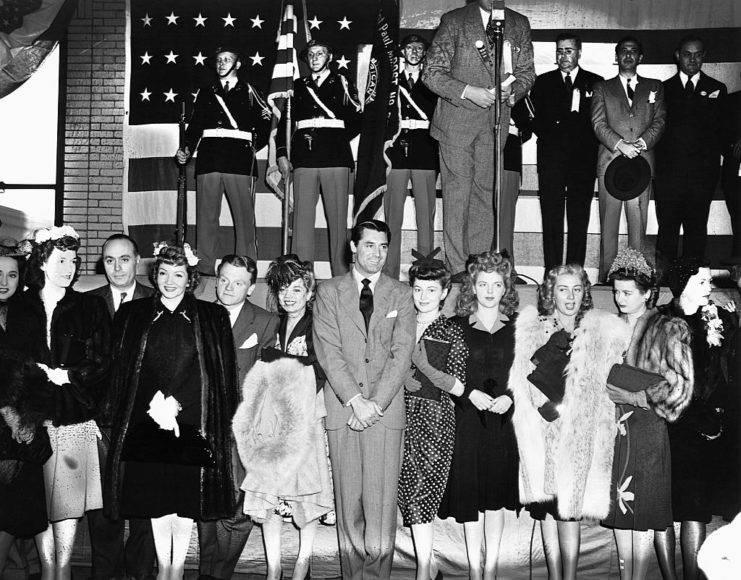
It’s estimated that within the nearly four years it ran, the Hollywood Victory Committee held 56,037 free appearances over 7,700 events, including 120 overseas tours. Its stars covered five million miles in their effort to entertain troops and encourage support for the war effort.
Hollywood Victory Caravan
One of the committee’s most notable successes was the Hollywood Victory Caravan, which ran for two weeks in the spring of 1942. It aimed to raise money for the Army and Navy Relief Society, and involved two dozen movie stars coming together to ride the rails and perform shows along the way.
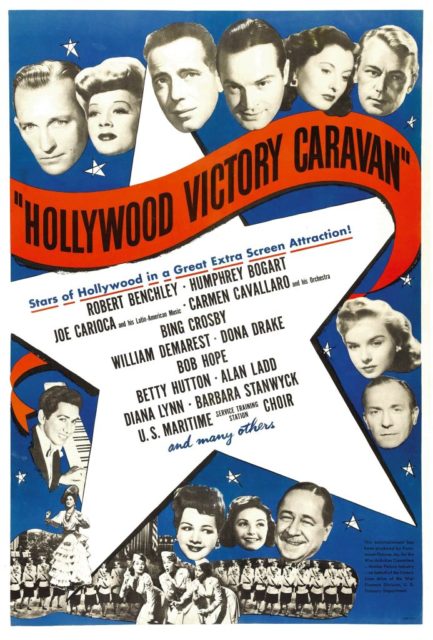
Inspiration for the caravan came from the all-star war bond show held at New York City‘s Madison Square Garden on March 10, 1942. To ensure the two-week journey could occur, the Santa Fe Railroad donated a special train with 14 railcars, which had on-board rehearsal facilities, including ten musicians, two pianos and two portable dance floors.
The train set off from Los Angeles on April 26, 1942, where it traveled to Washington, D.C. for the White House Tea Party. From there, it hit Boston, Philadelphia, Cleveland, Detroit, Chicago, St. Louis, St. Paul, Minneapolis, Des Moines, Dallas and Houston. Those aboard included Bob Hope, Carey Grant, Bing Crosby, Olivia de Havilland, Desi Arnaz and Merle Oberon, among others.
The shows lasted approximately three and a half hours, and consisted of variety-type performances. Each star was given a brief role, with Bob Hope and Carey Grant sharing the role of master-of-ceremonies. In total, the endeavor netted over $700,000.
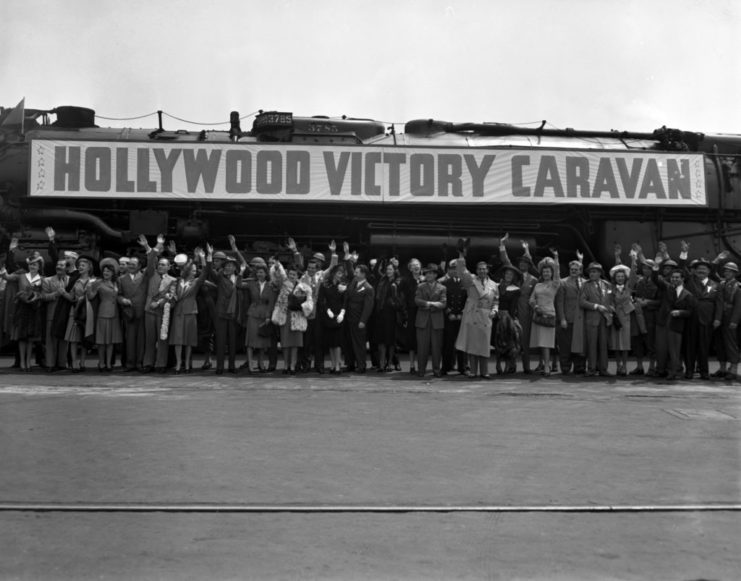
Upon its completion, each performer was presented with an engraved press book of newspaper stories from each city and a commemorative photo album. In 1945, Paramount Pictures teamed up with the War Finance Committee and the Department of the Treasury to produce a short film based on the traveling show, in which many of the performances were featured.
